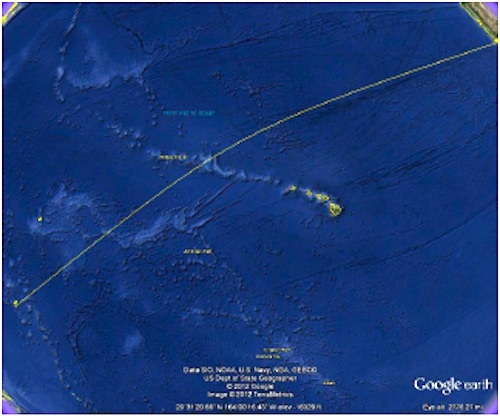
-
![]()
June 26, 1966 - Pacific Ocean
The source of this information is from the project 1947 files. The table states the event was seen from a Saturn Airways pilot and six other airlines that were between Hawaii and Wake Island. The description is, “one bright light seemed to expand like a gas bubble with a bright blinking light in the center.“1
Project 1947 files
These files are not readily available so I had to send e-mail requests to Jan Aldrich or Barry Greenwood. Requests were made for information but I never received any response from either individual. As I a result, I had to make some assumptions about what was reported. I could find no references to these cases anywhere else indicating that they were not very high profile events.
Analysis
This case really did not require much analysis. The event was probably the launch of an Atlas ICBM.2 The time listed in the table was 1530Z on the 26th. At 1534Z, the missile was launched westward from Vandenberg towards Kwajalein atoll. Its trajectory would have taken it between the Hawaiian islands and Wake island, which is the location given in the table.

I had examined a sighting from this launch before. In SUNlite 4-6, it was the explanation of a Blue Book UNIDENTIFIED. In that case it was an officer aboard the SS Mount Vernon, who saw a UFO at approximately 1600Z. He also described a bright flashing light in the center of an expanding gas cloud. It appears that he saw the same thing. While I don’t have the Project 1947 files, the descriptions, given in the table, match the description of an ICBM test pretty well. I don’t consider the time being off by about 30 minutes that significant either.
Conclusion
In my opinion, unless the sightings indicate completely different directions than the expected trajectory, this case is explained.. This should be removed from the Weinstein catalogue.
Quelle: SUNlite 3/2021
